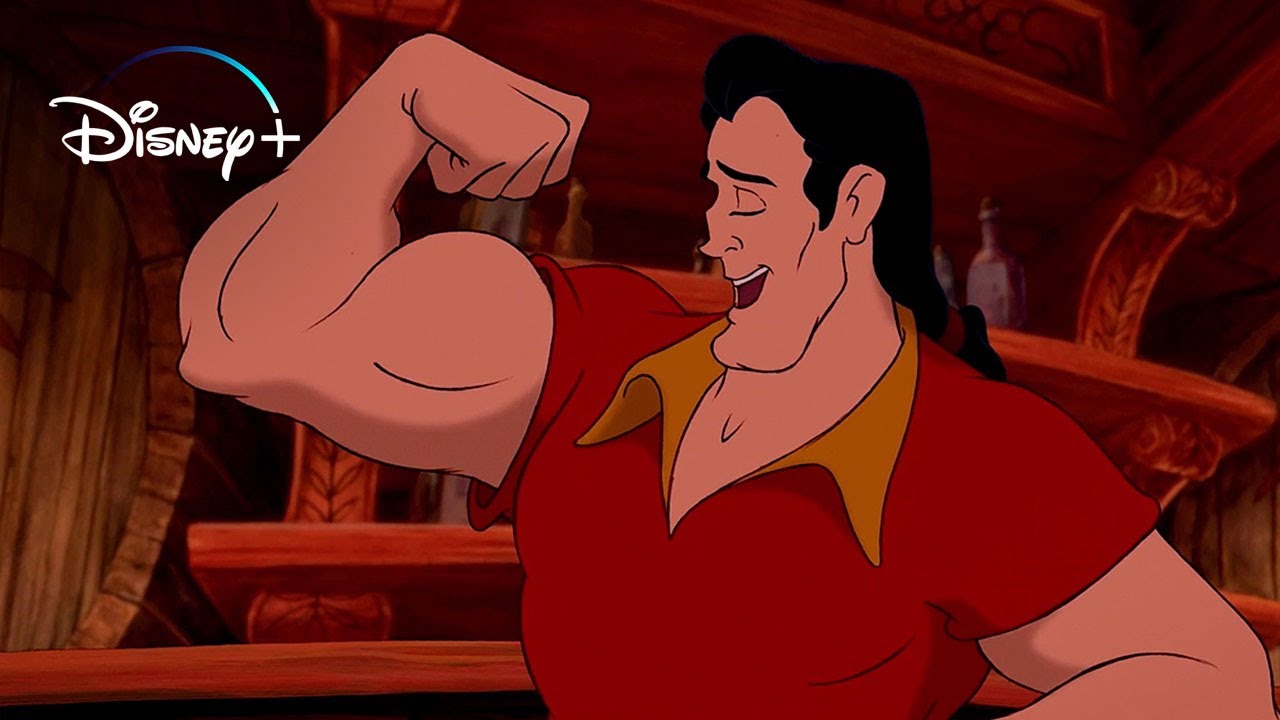In the rich tapestry of Disney’s animated classics, few characters have captivated audiences quite like Gaston. The brawny, boisterous antagonist of “Beauty and the Beast” is a figure of both fascination and revulsion, embodying a unique blend of charm, arrogance, and toxic masculinity. Through his character, the film delves into themes of appearance versus substance, the nature of heroism, and the dangers of unchecked ambition. Gaston is more than just a villain; he’s a complex study in the darker aspects of human nature.
At first glance, Gaston appears to be the epitome of traditional masculinity: ruggedly handsome, physically imposing, and oozing confidence. His chiseled features and impeccable grooming make him the object of desire for many of the women in the village, and he revels in the attention lavished upon him. However, beneath this veneer of charm lies a deeply flawed individual whose arrogance blinds him to the true beauty of the world around him.
Gaston’s obsession with Belle, the film’s protagonist, serves as a catalyst for much of his villainous behavior. He sees her as the ultimate prize, an object to be won through persistence and brute force. His inability to comprehend Belle’s independence and intelligence fuels his resentment, leading him to resort to increasingly desperate measures to win her affections. Gaston’s relentless pursuit of Belle highlights the toxic entitlement that often accompanies traditional notions of masculinity, portraying him as a cautionary tale of what happens when unchecked desire turns into obsession.
Despite his many flaws, Gaston is not without his redeeming qualities. He is undeniably charismatic, capable of rallying the villagers to his cause with little effort. His swagger and bravado make him a magnetic presence on screen, drawing viewers in with his larger-than-life personality. Additionally, Gaston’s unwavering loyalty to his sidekick, LeFou, humanizes him to some extent, showcasing a rare glimpse of vulnerability beneath his tough exterior.
However, it is Gaston’s ultimate downfall that truly cements his status as one of Disney’s most memorable villains. Consumed by jealousy and wounded pride, Gaston’s actions escalate from misguided attempts at wooing Belle to outright villainy. His decision to manipulate the villagers into storming the Beast’s castle is a desperate bid to eliminate his rival and claim Belle as his own. Yet, in the end, it is Gaston’s own hubris that leads to his demise, as he falls to his death during a climactic showdown atop the castle’s towers.
What sets Gaston apart from other Disney villains is his status as a mirror image of the film’s hero, the Beast. Both characters embody different aspects of masculinity: the Beast represents the struggle to overcome one’s inner demons and find redemption, while Gaston personifies the dangers of toxic masculinity run amok. In this way, Gaston serves as a foil to the Beast, highlighting the importance of humility, empathy, and selflessness in the journey towards true heroism.
The legacy of Gaston extends far beyond the confines of “Beauty and the Beast” itself, permeating popular culture in various forms. From theme park attractions to Broadway adaptations, Gaston has become a cultural icon in his own right, beloved by fans for his memorable quotes, iconic song-and-dance numbers, and larger-than-life personality. His status as a Disney villain is undisputed, yet there is a certain allure to his character that continues to captivate audiences of all ages.
Conclusion
Gaston is more than just a villain; he’s a multi-dimensional character whose complexity adds depth to the timeless tale of “Beauty and the Beast.” Through his portrayal, the film explores themes of masculinity, obsession, and the nature of heroism, offering viewers a nuanced depiction of human nature. While Gaston may ultimately meet his demise at the hands of his own arrogance, his legacy lives on as one of Disney’s most captivating and enduring characters.

